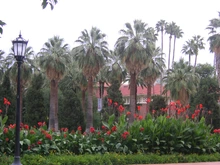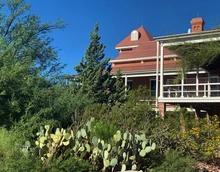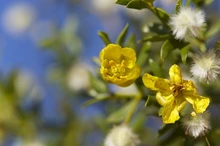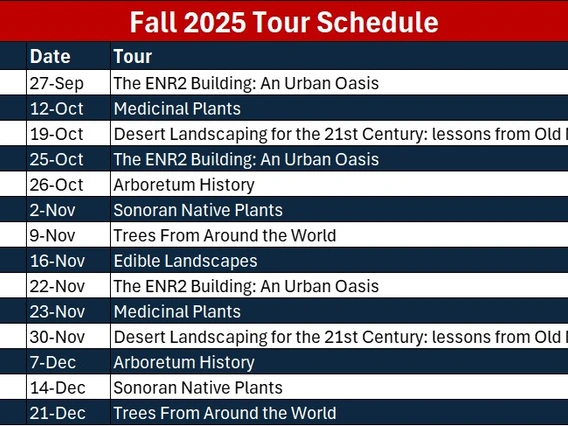Registration for the Fall tours opens August 1, 2025
Public Guided Tours
Register for a free guided tour of one of seven different collections of trees and plants in the Campus Arboretum. Led by Pima County Master Gardeners, the tours provide in-depth education, information and the opportunity to get all your questions answered. Interested in Sonoran Natives? Edible Plants? Landscaping for the 21st Century? We have a tour for each of these and more. Plant lists and other resources are provided.
The guided tours are scheduled throughout the academic year on Sunday mornings, with a few on Saturday mornings. The times vary depending on the season. Most tours start at the Berger Memorial Fountain on the west side of the Old Main Building and last 60-90 minutes. Parking is available in several campus garages at a cost of $2 per hour.
Space is limited and registration is required. Upon registration you will receive a confirmation email with specific information for your tour and directions to the parking garages.
Click below to read tour descriptions.

Historic and iconic Washintonia filifera (California fanpalm) on the Mall.
Learn the history and the heritage of Arizona's oldest University. Follow our guides as they show you beautiful places and tell you fascinating facts about the growth and development of the University, and how it came out of the sands of the Sonoran Desert to become the jewel of Arizona!

What makes the Old Main building so important? It’s the first building on the University of Arizona campus and has been a place of education and learning for over 130 years. But it’s also the site of beautiful and water-wise landscaping, combining the best of desert and adapted trees and plants with water conservation practices suitable for our hot and dry climate. Join us to see how it’s done.

The campus arboretum is home to a unique collection of desert-adapted trees from around the world. Some will be familiar, and others are exotic. All of them are beautiful. Join us to learn what they are, why they are here and how they are used in their native country.

The University of Arizona Arboretum is home to some of the finest specimens of Sonoran native plants and trees anywhere. Join us as we tour the Joseph Wood Krutch Garden and other areas of the campus featuring these remarkable, adaptable, and water-wise plants and trees. Learn about their history, current use and why they should have a place in any desert garden.

While all the trees in the Campus Arboretum are beautiful, some of them are also edible. Join us for a tour of these trees, including olive, fig, pomegranate, and a few you may have never heard of. Learn how many of these trees and plants have been cultivated as food by people here and elsewhere for thousands of years.

Plants have been used as medicine for hundreds, if not thousands of years. They are part of the history and lore of almost every society on earth. Join us to learn how these plants—from the Sonoran Desert and elsewhere--have been traditionally used to treat different ailments and other conditions.

How can we have a lush but water-wise garden in the middle of a densely populated city? Join us at the Environment and Natural Resources 2 Building (ENR2), a LEED Platinum certified structure to learn how to create your own urban oasis. Witness innovation in water harvesting and how to identify match plant choice with microclimates created by the building.
Special Request Group Tours
We also offer tours at other times by special request. Special Request Group Tours are offered from November-March and available to groups of 6-12 with at least 2 months advance notice. Since tours are planned on a bi-annual basis, and we get many requests for special tours, please contact us as far in advance as possible. 6 months advance notice is more likely to secure a spot for your group. To find out about a special tour, please email Arboretum-Tours@arizona.edu.



